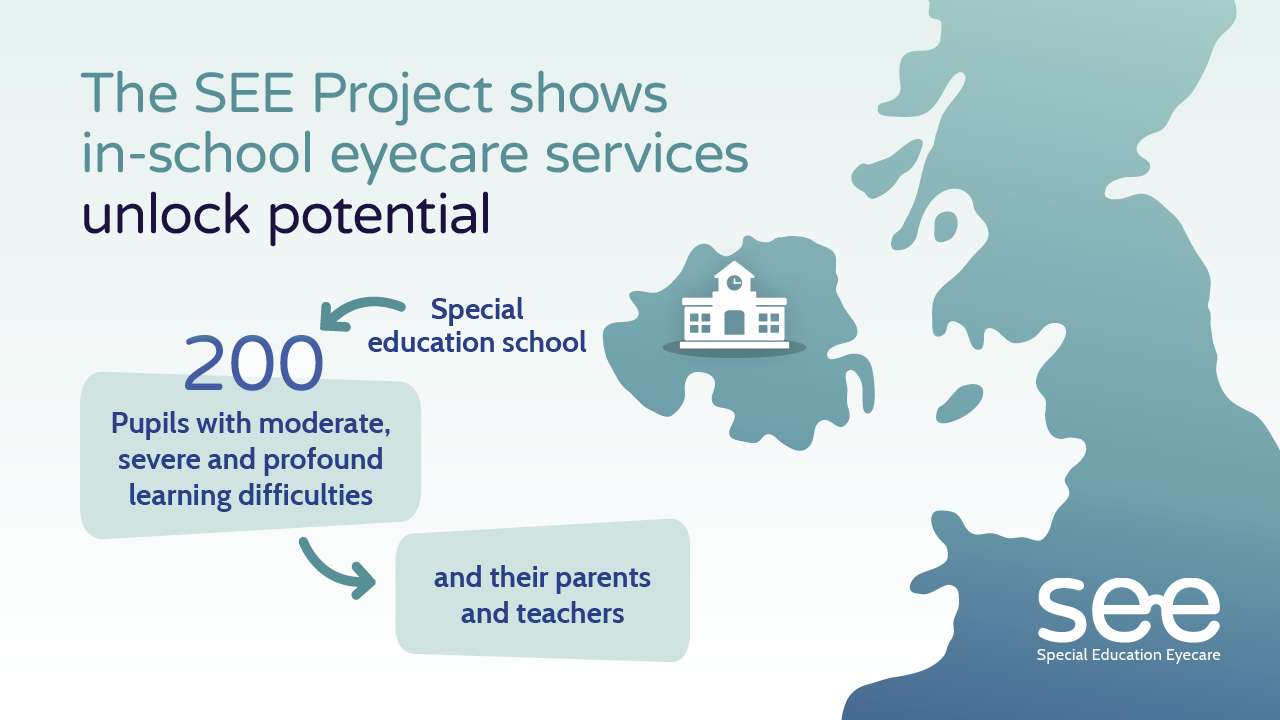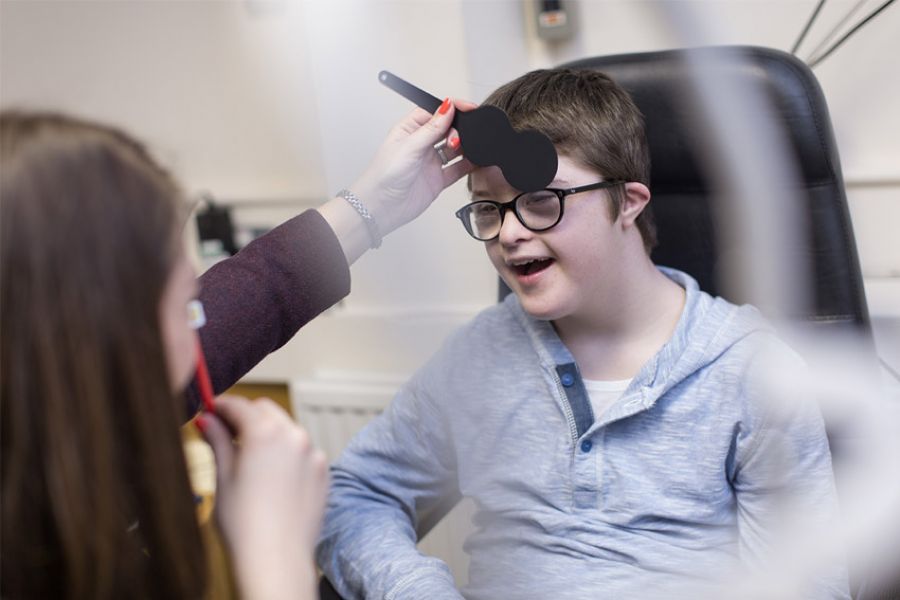Page content
It is estimated that children with learning disability are 28 times more likely to have visual problems compared to their typically developing peers.
- These vision problems impact a child's education and general development if left unrecognised or untreated, therefore it is important that these problems are detected, managed and communicated effectively.
- Access to eyecare for children with developmental disability can be challenging. Considering more accessible, extended modes of provision for these vulnerable children is an opportunity to make a real difference.
Providing comprehensive vision services in special schools is a proposed framework, endorsed by eyecare professionals.3
The framework includes:
- A full in-school eye examination
- Dispensing of glasses in school where needed
- Jargon-free reports describing the child's visual status, for parents, teachers, and others involved in the child's care
- Suggestions for changes in the environment to improve learning, for example, enlarging print size or decluttering
The SEE project, funded by Action Medical Research, applied this framework and measured, for the first time, the benefits to children's vision and learning.
Results from the project are now published in scientific, peer-reviewed journal, Plos One, and is available to read.
The video below highlights the key findings from this research:
A summary of the key findings of The SEE Project is available as an infographic designed by healthcare communications agency, Wordbird.

An important part of the in-school eyecare was the dissemination of jargon-free written reports to parents, teachers and other stakeholders involved in the child's care. The report described each child's visual status and visual needs in lay-language, explaining how to help the child make best use of their vision and optimise their access to the curriculum by modifying the class or home environment.
Read a copy of the report used by The SEE Project.
Resources provided to parents and teachers to explain a child's vision are available on the Ulster Vision Resources webpages .
In summary
- Poor vision can mask a child's true potential.
- There are measurable benefits to vision, classroom engagement and learning opportunities when the in-school eyecare model validated by The SEE Project is implemented.
- Activating in-school eyecare for children with special educational needs is part of removing visual barriers; enhancing children's ability to access the curriculum.
Research with Impact
At the end of the research project, stakeholders from across the UK and Ireland were invited to attend a workshop event in Belfast.
The aim of the event was to:
- Disseminate research findings to key stakeholders
- Influence evidence-informed change in clinical and educational practice
- Refine, with stakeholder feedback, public-facing research outputs
- Share experiences from in-school eyecare services across the UK
Over 40 stakeholders, including service users and representatives from health, education and the charitable sector, participated in a series of round-table discussions to identify key considerations with regard to vision services for children in Special Education settings.
View a summary of the discussion and outputs from this stakeholder event.
Publications to date
McConnell EL, Black SA, McClelland JF, McKerr L, Dillenburger K, Anketell P, Jackson AJ, Little J-A, Saunders KJ. (2020) Parents and teachers of children in special education settings value in-school eyecare and written reports of visual status. PLoS ONE 15(9): e0238779.
McKerr L, McConnell E, Black S, McClelland J, Little J-A, Saunders KJ, Dillenburger K. (2020) Meeting vision needs of children with special educational needs: Case studies of the impact on behaviour and academic achievement. British Journal of Learning Disabilities. 48:1, 45-58.
Black, S., McConnell, E., McKerr, L., McClelland, JF., Little, JA., Dillenburger, K., Jackson, AJ., Anketell, P. & Saunders, KJ. (2019) In-school eyecare in special education settings has measurable benefits for children's vision and behaviour. PLoS ONE 14(8): e0220480. DOI:
McConnell, E., Black, S., Little, JA., McClelland, JF., McKerr, L., Dillenburger, K., Anketell, P., Jackson, AJ. & Saunders, KJ. (2019) Testing a framework for eye care provision in special educational schools in the UK: are there measurable benefits? ARVO annual meeting. [Poster presentation]
Black, S., McConnell, E., McClelland, JF., Little, JA., Anketell, P., Jackson, AJ., McKerr, L., Dillenburger, K. & Saunders, KJ. (2018) The blind spot in Education Health and Care Plans: Is vision being overlooked? BIPOSA annual meeting, Manchester, UK. [Oral presentation]
McConnell, E., Little, JA., Black, S., McClelland, JF., Jackson, AJ., Anketell, P., McKerr, L., Dillenburger, K. & Saunders, KJ. (2018) Written reports of visual status are valued and utilised by parents of children with special educational needs. BIPOSA annual meeting, Manchester, UK. [Oral presentation]
Further outputs will be posted in due course.
The Research Team
The SEE Project was carried out by colleagues from Ulster University (UU), Queen's University Belfast (QUB) and the Belfast Health and Social Care Trust (BHSCT).
Principal investigator
- Prof. Kathryn Saunders, kj.saunders@ulster.ac.uk (UU)
Co-Investigators:
- Dr Julie-Anne Little (UU)
- Dr Julie McClelland (UU)
- Dr Shelley Black (UU)
- Dr Emma McConnell (UU)
- Prof. Karola Dillenburger (QUB)
- Dr Lynne McKerr (QUB)
- Prof. A. Jonathan Jackson (BHSCT)
- Dr Pamela Anketell (BHSCT)
References
1. Emerson, E and Robertson, J. (2011) Prevalence of visual impairment amongst people with learning disabilities. [Accessed 23rd January 2019]
2. Little, JA and Saunders, KJ. (2016) A lack of vision: evidence of poor communication of visual problems and support needs in education statements/plans for children with SEN. Public Health. 129 (2) 143-148.
3. SeeAbility. (2016) Framework for provision of eyecare in special schools in England. [Accessed 23rd January 2019]

















